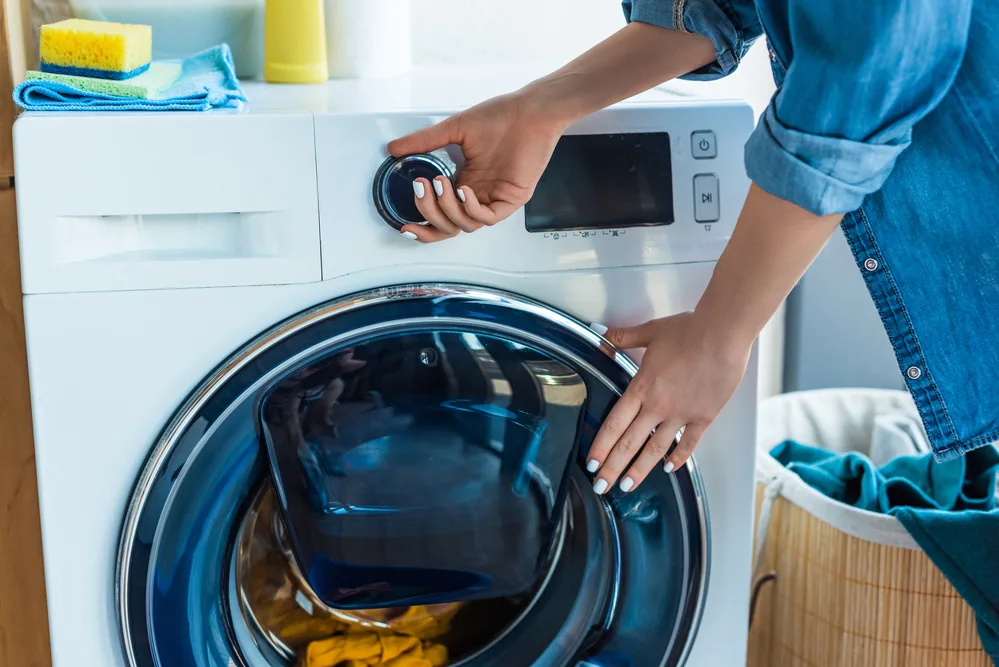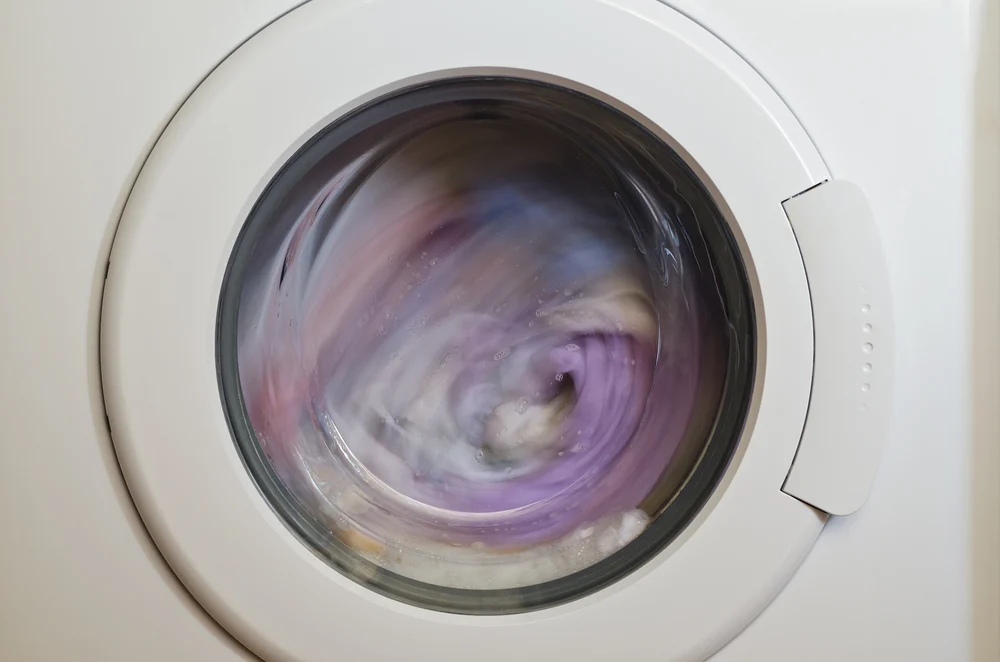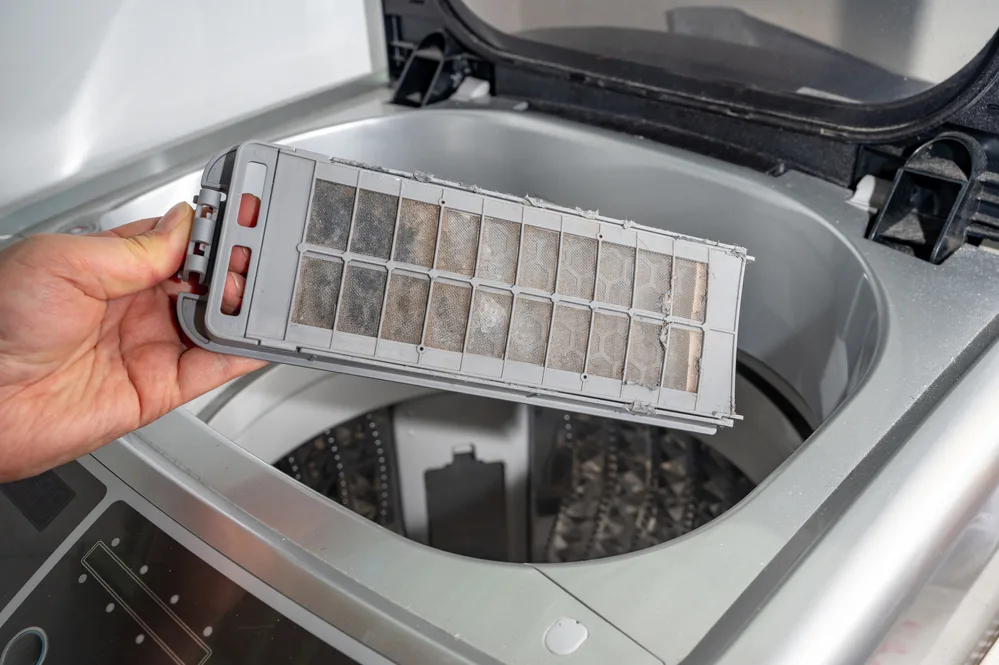Sometimes you take the washing out of your washing machine only for it to start dripping all over the floor. I’ve been there many times myself. In similar situations, you might begin to wonder whether you did something wrong and how you could prevent it.
There are a few reasons why this could be happening to you. If you know the reason, you can make sure it will never happen again. So, let’s check them out!

All modern washers have a spin cycle. Thus, after washing, clothes will be wet but not enough to drip when hanging or for water to be wrung by hand from the fabric. If the clothes are wetter than this, something is wrong with the washing machine.
Washing Should Not Drip After a Spin Cycle
All washers have a spin cycle. This cycle is necessary to remove excess water from the clothes after it has been washed and rinsed by the washing machine.

You could say that the spinning helps to squeeze the water out of the clothes, which then escapes through the holes in the drum. If you want a more scientific explanation, we have to dive into a little bit of physics.
When the drum of a washer starts spinning, the clothes inside start moving. Objects that are in motion want to stay in motion (preferably at a constant speed and in a straight line).
The spinning drum doesn’t allow the clothes to do this. However, there is a way for the water to do it because the drum has small holes in it. Water molecules can escape through these holes in their preferred straight line while the clothes stay in the drum.
Research shows that the faster the drum spins (the higher the RPM), the more water it removes.
You should not be able to wring any significant amount of water out from your laundry after it has gone through the spin cycle. Of course, the washing will still be wet, but there should not be any significant dripping of water from these items.
The clothes should be dry enough so that you can pop them straight into the dryer if you so choose.
If the items are dripping, you are likely facing some of the problems we’re going to talk about.
Warning: do not put sopping wet clothes from a malfunctioning washer straight into the dryer as this can damage your dryer.
Why Is Washing Very Wet After Spin Cycle?
Cycle Did Not Actually Finish
The most common reason for clothes being soaked wet even after the spin cycle is when the cycle doesn’t finish properly. Usually, this happens when the drum of the washing machine gets unbalanced.

Unbalanced doesn’t necessarily have to mean the device itself isn’t level. It can often mean that the laundry in the drum is unbalanced. The most likely cause is that the machine is overloaded or that there are some heavy or very big items positioned in a way that makes the machine unbalanced.
This is often the case with top loaders. One of the telling signs your top-loader is unbalanced is when it starts making a banging noise.
The spin cycle could also be interrupted due to the malfunction of a lid switch (for top-loaders) or door latch (for front-load washers).
If the lid or door of the washer open (or just signal that they’re open), the spin cycle is automatically stopped. However, this issue is less common than the problems with unbalanced washers.
Drum Is Not Draining Properly
If all your washing is wet consistently after every spin cycle, regardless of how full the drum is or whether the machine is unbalanced, then it is likely due to issues with the drain hose or pump.
If the problem is with the hose, it is typically easy to notice as you will be able to see whether the hose is twisted or kinked.
Alternatively, the hose could be clogged up on the inside. In order to inspect it, you need to remove the hose and look for any soap balls, small pieces of clothing, or forgotten tissues and coins that could be causing the blockage.

It is also important to check and clean the drain filters as these can often accumulate small particles and debris that can easily clog it up.
Once you can confidently rule out any issues with the drain hose, it is time to inspect the drain pump. This is slightly more difficult than inspecting the hose.
The pump needs to be removed and inspected for any blockages and possibly even tested for continuity with a multimeter (amazon link). The reading should be somewhere between 5-10 ohms; otherwise, it indicates that the pump is faulty.
Leaking Water Inlet
It is possible that the washer is spinning and draining the clothes just fine, and the problem lies elsewhere.
The washer’s water inlet could be leaking inside the machine, causing water to inflow into the washer at all times, even during and after the spin cycle. In this case, your washing would never have a chance to dry out properly.
If you let the laundry stand in the washer for a while, you would likely be able to notice that the items closest to the water inlet are more soaked than the rest.
To confirm or disprove an inlet water leak, try to keep an eye on your washer to see whether there is water in it even when it’s not running.
Underpowered Spin Cycle
Another possible reason why your washer doesn’t seem to be able to spin your clothes properly is that it simply doesn’t have enough power to do so. Why would the washer not have enough power?
It can happen if the washer is plugged into an extension cord. Extension cords sometimes are not able to provide the machine with enough power, which usually results in a slow and inefficient spin cycle.
But it can also lead to the washer shutting down due to overheating. This means using an extension cord to power your washer could even lead to the spin cycle being interrupted or skipped entirely.
If you don’t use an extension cord, there are two other possible reasons why the spin cycle is underpowered. The first one is that you simply used the wrong RPM setting, and the cycle was meant to spin slowly. However, you would most likely notice this.
The second and more probable reason is that there is some mechanical issue with the motor, belt, or another part of the washer.
If your clothes are still sopping when they come out of the washer, then the chances are that they are still soapy. This can lead to the development of yellow stains if they are dried in the dryer.
Solutions to Wet Clothes After Spin Cycle
If you suspect your machine is unbalanced, just rearrange the washing inside the drum or take some of the heavy items away and run the spin cycle again. The best way to avoid this is to ensure you don’t overfill the washing machine.
Try to avoid using an extension cord to power your machine.
Inspect the drain hose and carefully straighten any possible twists and kinks to ensure it can drain properly.
If you want to clean a clogged up drain hose, the easiest way to do it is to remove it from the machine and use a high-pressure water hose to clean the drain hose. This video shows you how to do that.
Please remember that if you are unsure of anything, it is best to consult a professional.
If the drain hose is damaged, you can replace it with a new one. Also, don’t forget to clean the drain filter.
- Heavy Duty - Made of high quality corrugated rubber preventing kinks or leaks
- Universal Size - Washer drain hose is compatible with most washing machines brands with a size of 1 inch, 1-1/8 inch and 1-1/4 inch
- Low Cost - Best economical choice when comparing expensive brand name washing machine discharge hoses at 1/2 the cost
- Free Clamp Included - Free heavy duty adjustable clamp to fit most size washing machine drain outlets and secures hose firmly for leak-free use
Last update on 2024-03-28 / Affiliate links / Images from Amazon Product Advertising API
In case you find out that the washer’s belt, motor, door, lid, drain pump, or other parts are malfunctioning, your best option is to call a technician to inspect the appliance.
Lastly, if you notice the water inlet is leaking, it either needs to be tightened or replaced.
Sources
https://avivservicetoday.com/washers/washer-leaves-clothes-wet/
https://www.candy-home.com/en_GB/blog/all-you-need-to-know-about-the-spin-cycle/
https://www.doityourself.com/stry/troubleshooting-a-washing-machine-that-wont-drain
https://www.physicsforums.com/threads/centripetal-force-discussion-question-washing-machine.561922/

